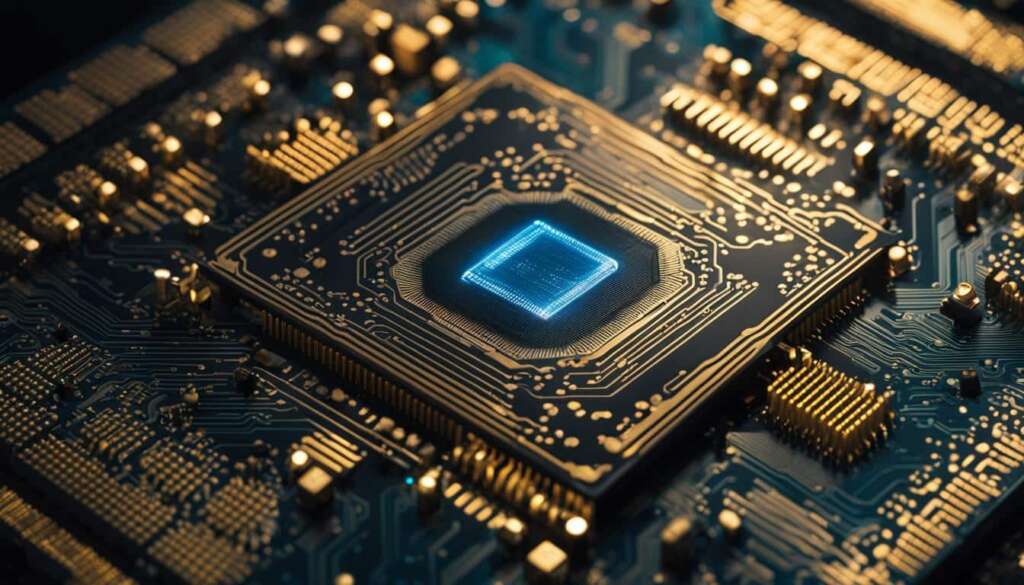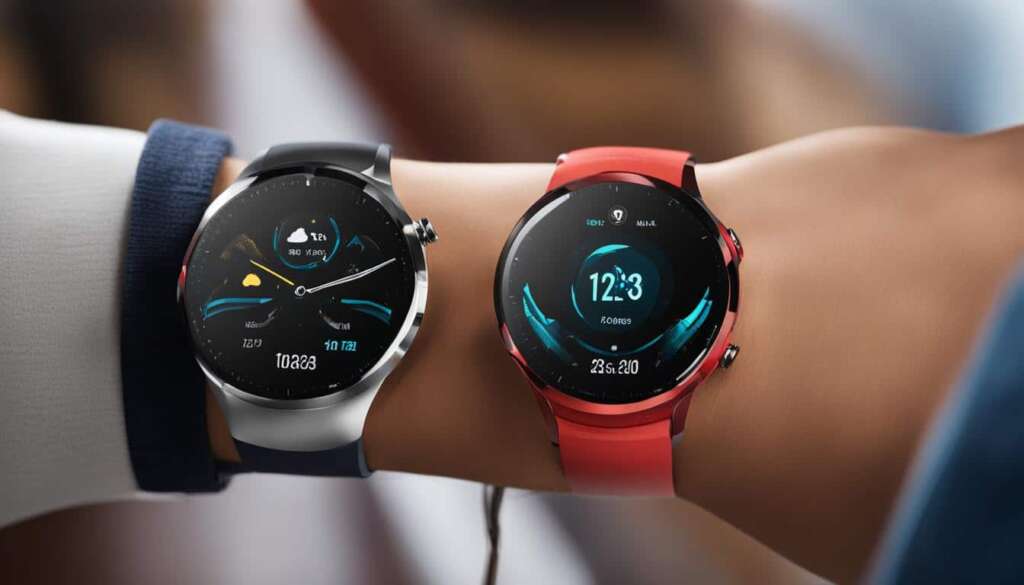Table of Contents
In today’s fast-paced world, mobile technology and Internet of Things (IoT) devices are ubiquitous, connecting us, and revolutionizing the way we interact with our surroundings. While these technologies offer significant benefits, they rely heavily on the efficiency and power of their underlying hardware components. ARM processors, as we’ll explain in this section, are a vital part of the equation, playing a significant role in the development and advancement of these digital innovations.
Key Takeaways
- ARM processors serve as the backbone of cutting-edge mobile and IoT devices
- They utilize a Reduced Instruction Set Computing (RISC) design, which provides low-power and efficient solutions
- ARM processors offer excellent energy efficiency, making them ideal for power-constrained IoT applications
- They are versatile and can be customized and integrated into a wide range of devices
- ARM processors continue to drive innovation and enable the seamless integration of advanced technologies into our everyday lives
What is an ARM Processor?
To start, let us define what exactly an ARM processor is. ARM, which stands for Advanced RISC Machines, refers to a type of microprocessor architecture developed by ARM Holdings. These processors utilize a Reduced Instruction Set Computing (RISC) design, which enables them to perform tasks more efficiently and with lower power consumption compared to other processor architectures. They are widely used in mobile devices, such as smartphones and tablets, as well as in various IoT applications.
The ARM processor architecture boasts several components that make it stand out for mobile and IoT technology use cases. One key feature is the use of a load-store architecture, which optimizes processing and reduces data movement. Additionally, the processor’s 32-bit code addressing and 32-bit data addressing capabilities enable it to handle larger datasets efficiently.
“ARM processors are designed to deliver maximum efficiency in a compact and low-power form factor, which is why they are ideal for use in mobile devices and IoT applications.”
Another notable aspect of ARM processors is the wide range of variants available, offering unique features and performance capabilities to suit specific applications. For instance, some processors may include additional memory interfaces or support for advanced graphics processing.
ARM Processor Definition
| Term | Definition |
|---|---|
| ARM Processor | A microprocessor architecture developed by ARM Holdings that utilizes a Reduced Instruction Set Computing (RISC) design for efficient, low-power processing in mobile and IoT technology. |
| Reduced Instruction Set Computing (RISC) | A processor architecture that utilizes fewer instructions per operation, enabling faster processing speeds, greater throughput, and lower power consumption. |
| Load-Store Architecture | An architecture design in which arithmetic and logical operations can only be performed on registers, not memory directly. This design optimizes processing and reduces data movement. |
| 32-bit Code Addressing | A processor’s capability to handle instructions up to 32 bits in length, enabling it to execute larger and more complex operations. |
| 32-bit Data Addressing | A processor’s capability to handle data up to 32 bits in length, enabling it to process larger datasets efficiently. |
Overall, ARM processors offer a unique combination of power and efficiency that makes them the go-to choice for manufacturers looking to develop cutting-edge mobile devices, IoT applications, and other digital technology solutions.
Advantages of ARM Processors in Mobile and IoT Technology
ARM processors have become the go-to choice for mobile and Internet of Things (IoT) devices, thanks to their exceptional performance and power efficiency. Here are some advantages of ARM processors that make them the preferred option for manufacturers:
RISC Design for Faster Processing Speeds
ARM processors use a Reduced Instruction Set Computing (RISC) design, which allows them to execute instructions faster with fewer cycles than traditional processors. This, in turn, results in faster processing speeds and efficient multitasking in mobile devices, providing users with a seamless experience.
Low Power Consumption for Longer Battery Life
Mobile device battery life is a critical factor when it comes to convenience and usability. ARM processors’ RISC design enables them to consume less power, extending the device’s battery life significantly. The processor’s low power consumption is pivotal, particularly for mobile devices that are designed for prolonged use on a single charge.
Excellent Energy Efficiency for IoT Devices
Many IoT devices, such as smart home appliances, sensors, and healthcare wearables, are battery-powered and rely on wireless connectivity. ARM processors are ideal for these power-constrained IoT applications due to their excellent energy efficiency. Manufacturers use ARM processors in these devices due to their ability to optimize and conserve energy, ensuring that the devices operate as efficiently as possible for extended periods.
The ARM processor’s benefits discussed in this section make it highly sought after and versatile in mobile technology and IoT devices, helping manufacturers optimize the user experience and provide efficient solutions.
The Versatility of ARM Architecture
ARM processors are renowned for their adaptability and are used in a diverse range of applications, providing tailored solutions for specific industry requirements. These processors are typically found in smartphones and tablets, but their versatility extends far beyond these devices.
One notable application of ARM architecture is in embedded systems. The use of ARM-based chips allows for the development of highly efficient and low-power solutions in fields such as industrial automation, automotive systems, and medical equipment. For example, ARM processors are used in pacemakers due to their low power consumption and high-performance capabilities.
ARM processors are also ideal for wearable technology applications. The low power consumption and compact size of these processors make them the preferred choice for manufacturers of smartwatches and fitness trackers. The ARM architecture provides efficient processing capabilities, enabling these devices to monitor and analyze data while conserving battery life.
The table below provides a summary of some of the key applications of ARM architecture:
| Application | Description |
|---|---|
| Mobile Devices | ARM processors are widely used in smartphones and tablets due to their low power consumption and high-performance capabilities. |
| Embedded Systems | The use of ARM-based chips allows for the development of efficient and low-power solutions in fields such as industrial automation, automotive systems, and medical equipment. |
| Wearable Technology | ARM processors are preferred by manufacturers of smartwatches and fitness trackers due to their low power consumption and efficient processing capabilities. |
In conclusion, the versatility of ARM architecture is a significant advantage that makes it an attractive choice among manufacturers in various industries. Whether in mobile devices, embedded systems, or wearable technology, the ability to provide tailored solutions to meet specific requirements makes ARM processors a key player in the tech industry. This adaptability, coupled with their efficiency and low power consumption, positions ARM processors as a driving force behind modern digital advancements.
Conclusion
In conclusion, ARM processors are an integral part of mobile and IoT technology. Their RISC design enables faster processing speeds and more efficient performance, making them ideal for use in smartphones, tablets, and IoT applications. Furthermore, their low power consumption and energy efficiency help to extend battery life and conserve energy, making them a popular choice for manufacturers in various industries. The versatility of ARM architecture allows for tailored solutions to meet specific application requirements, from embedded systems to wearable technology. Overall, ARM processors continue to drive innovation and enable the integration of advanced technologies into our daily lives.
FAQ
What is an ARM processor?
An ARM processor refers to a type of microprocessor architecture developed by ARM Holdings. It utilizes a Reduced Instruction Set Computing (RISC) design, which allows for more efficient and lower power consumption compared to other processor architectures. ARM processors are commonly used in mobile devices and IoT applications.
What are the advantages of ARM processors in mobile and IoT technology?
ARM processors offer several advantages in mobile and IoT technology. Firstly, their RISC design enables faster processing speeds and efficient multitasking, leading to better performance in mobile devices. Additionally, their low power consumption helps to extend battery life, an essential factor for usability. ARM processors also provide excellent energy efficiency, making them suitable for power-constrained IoT applications that rely on limited power sources.
How versatile is ARM architecture?
ARM architecture is highly versatile and can be customized and integrated into various devices. It is widely used in smartphones, tablets, embedded systems, and wearable technology. This flexibility allows for tailored solutions to meet specific application requirements, making ARM processors a popular choice among manufacturers across industries.













